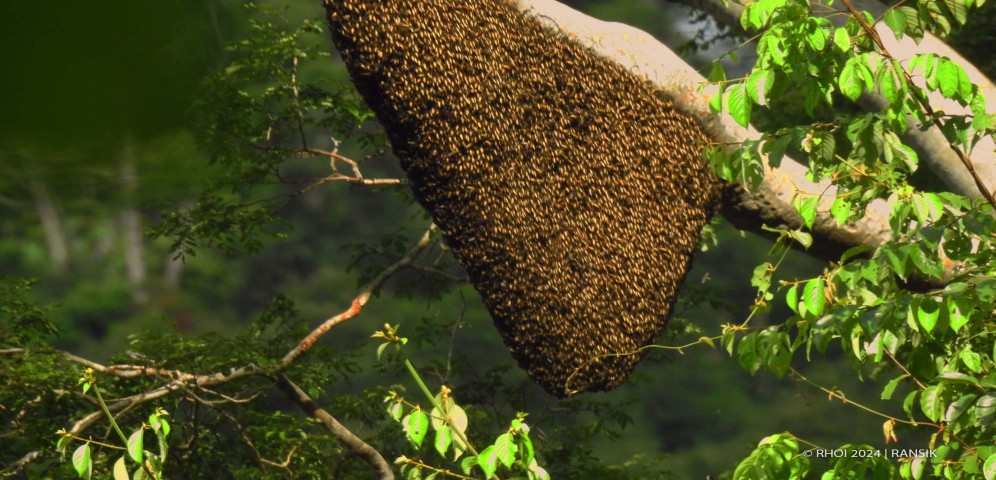15 Apr, 2024
BEES TAKE OVER CAMP NLES MAMSE
ECOSYSTEM RESTORATION
Sweet, flavourful, and nutritious, honey is beloved by nearly everyone, but the same cannot be said for bees. As the season for bees comes to Camp Nles Mamse, our post-release monitoring (PRM) team must be on high alert.
Read also: JUNGLE SURVIVAL 101 AVOID THE BEES
The forest bees flying around Camp Nles Mamse frequently sting at our team’s feet as they try to go about their days. Right now, bee stings are near a daily occurrence and the team even needs to be careful of bee attacks when going to the bathroom!
Fed up and in pain, the team decided to find the source of the never-ending stream of bees. Their efforts were rewarded with the discovery of several large hives in tall trees directly behind the camp. However, many of the hives were higher than 30 m off the ground, making it impossible for our team to chase away the bee colony or gather the honey.
Honey from forest bees is a popular non-timber forest product (NTFP) usually utilised by local communities as a tradable commodity. Not only is it used as a delicious sweetener, the forest honey is also used as a traditional medicine in Indonesia.
Read also: ANIMALS OF KEHJE SEWEN ROUNDUP!
Forest honey differs from honey produced by farmed bees, as it comes from the nectar of various local flowers, which enhances its benefits. Additionally, forest honey is much purer due to no additives being used and minimal processing.
Text by: PRM Team at Camp Nles Mamse, Kehje Sewen Forest, East Kalimantan




